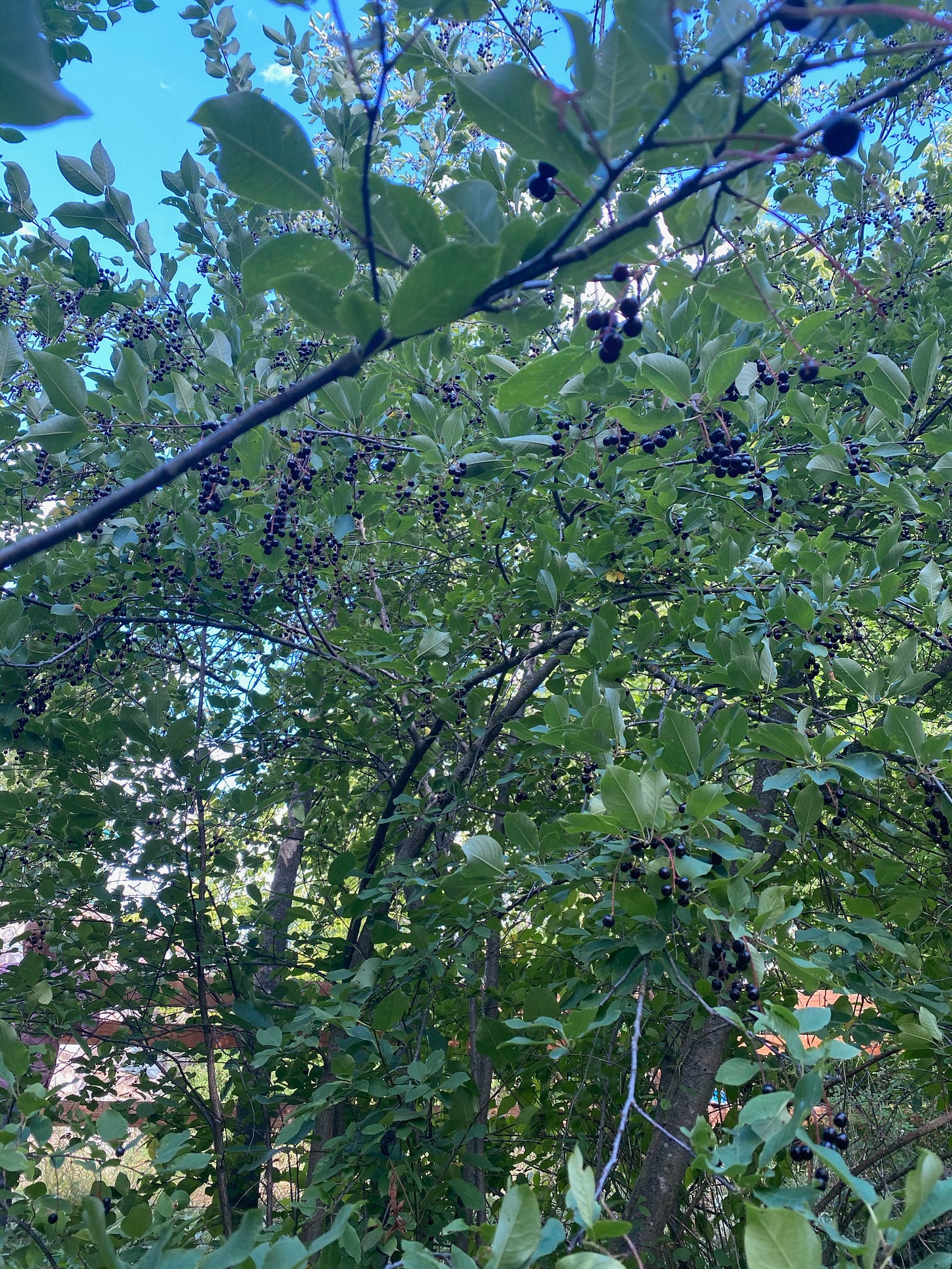
I’ve been thinking about abundance and commodification all summer. Every July we go camping with a bunch of friends and family, and our trip happens to coincide with when huckleberries are ripe in that particular location. (This photo is of chokecherries, not huckleberries.) This year was the first time I noticed that, although the kids eat huckleberries all day long, as do other camping kids, and campers and day visitors gather gallon bags full of berries to take home, the huckleberries never run short. There’s always enough for everybody until their season is over.
If commercial pickers aggressively harvested that area, though, the situation would be very different. There might be enough berries for that picker(s) to turn a profit, but little for everyone else. I would be seriously pissed off if that happened, and deeply sad, but isn’t it the reality for most of the world, and an increasing reality throughout much of human history? (This problem has plagued many civilizations.)
I’m just about finished reading an intriguing book, Strange Harvests, by Edward Posnett, in which the author visits the sources of 7 different items around the world and writes about their history, harvest, and commodification. The items include eiderdown in Iceland and cave-harvested birds’ nests in Borneo (popular particularly in China as the essential ingredient in bird’s nest soup). Although Posnett’s book is about the items and their harvest, what he’s really looking for throughout is a model for using and relating to the natural world and its bounties that is, for lack of a better word, sustainable and mutually beneficial for the ecosystem and animals involved.
There are actually many modern examples of this and plenty more throughout history. Success depends on group, community, or tribal cooperation along with management of a local resource being enabled and respected by larger authorities (a national government, say). The problem with the profit-above-all motive is that it encourages one actor to use up the resource and pocket the profits before others can take a cut. It leads to clearcut forests, extinct species, and poisoned waterways.
This week my stepmother, nieces, daughter, and I walked to a public park to pick chokecherries for jelly. I’ve picked from this particular public tree for years now, and it always produces far more than I could possibly use or even reach. So I make jelly and give it away and my daughter and I and stepmother eat some and every single time I think about what our relationship with this world could be if we stopped using everything up as if it’s not going to be there next year.



